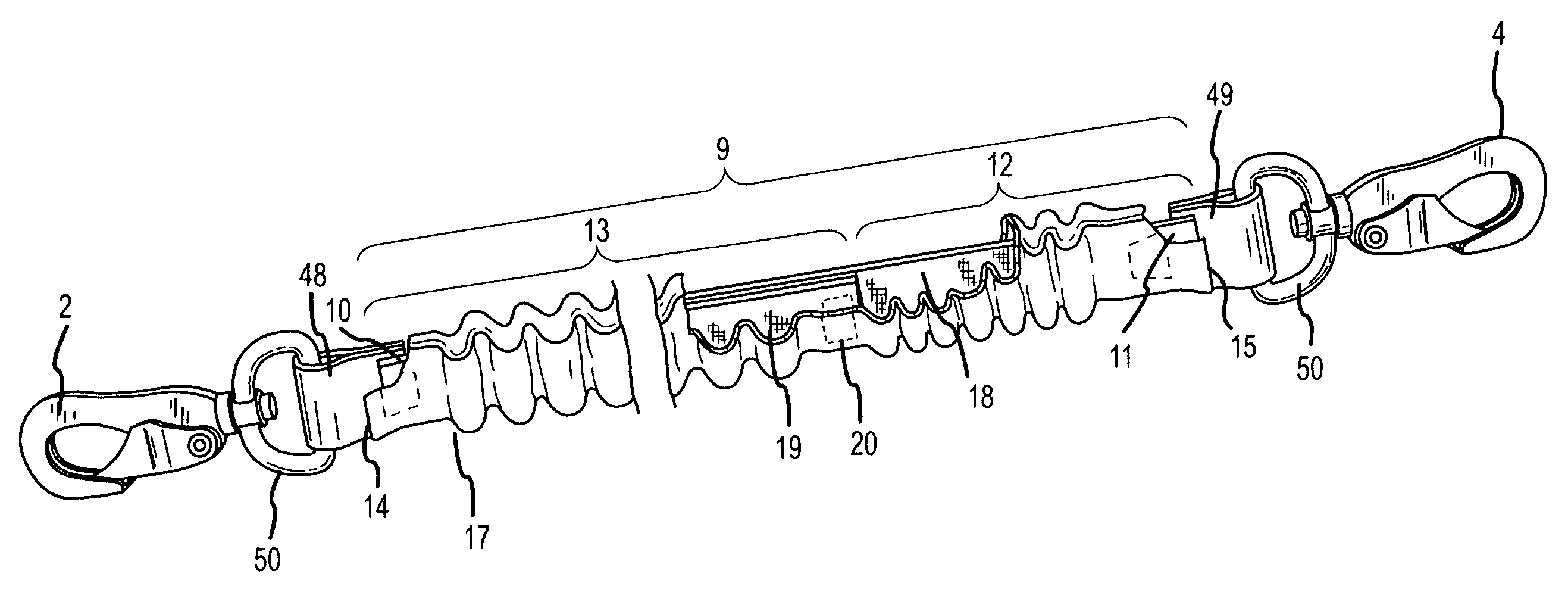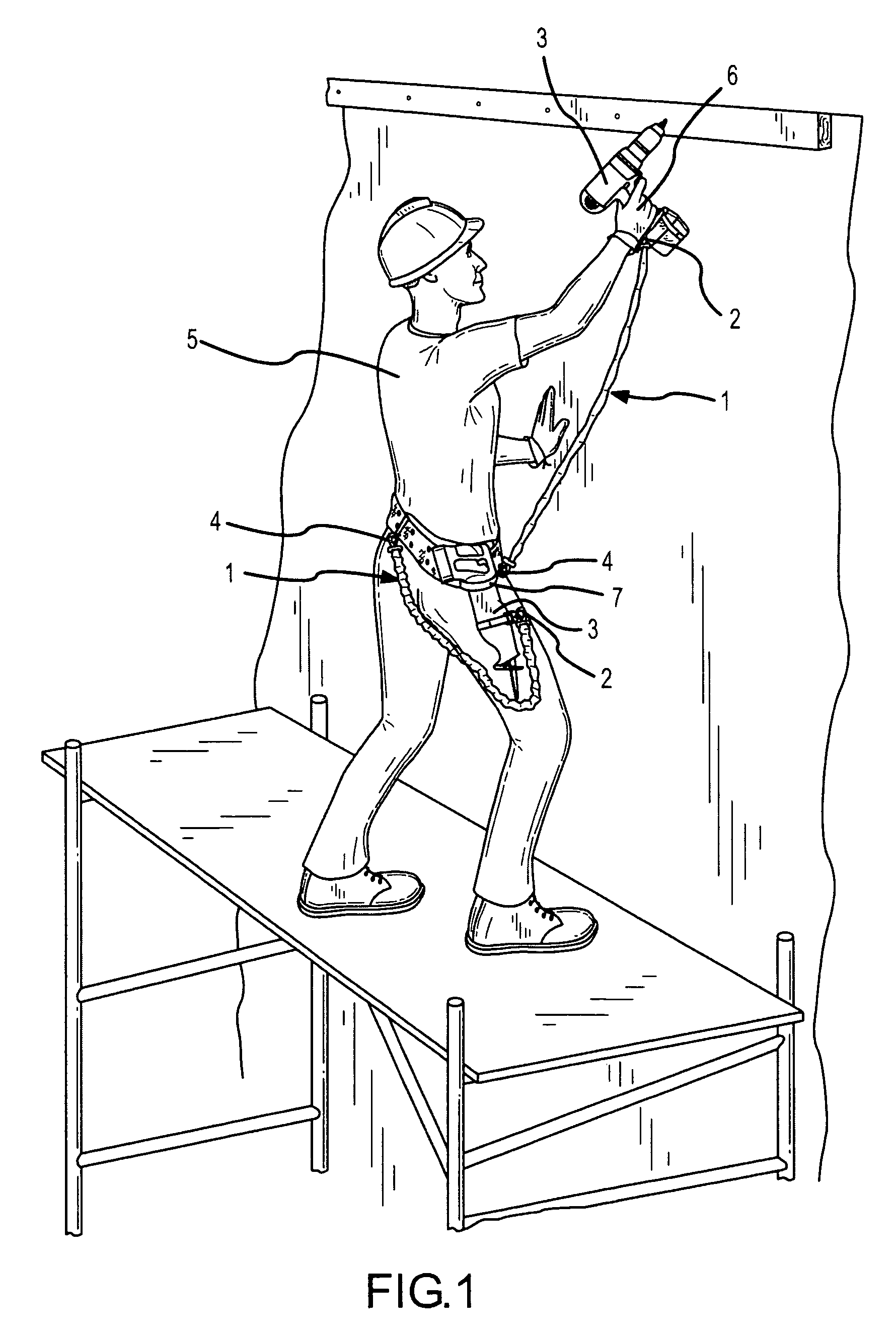Tether
a technology of tether and tether body, applied in the field of tether, can solve the problems of reducing the elastic resistance of the tether, the transmission of the entire force of deceleration to the second end of the conventional tether over a correspondingly short amount of time, and the range of responses
- Summary
- Abstract
- Description
- Claims
- Application Information
AI Technical Summary
Benefits of technology
Problems solved by technology
Method used
Image
Examples
Embodiment Construction
[0020]A tether having an elastic member which provides an unstretched length having a first part and a second part with the first part of the unstretched length having less elastic resistance than a second part of the unstretched length to alter characteristics of stretch and recovery toward the unstretched length under load.
[0021]Now referring primarily to FIG. 1, a particular method of using the inventive tether (1) is shown. The inventive tether (1) can be connected by a first fastener (2) to a tool (3) (or other object) and connected by a second fastener (4) to a person (5)(or a part of a person, the person's clothing, tool belt, or to another object) to establish a limited range of travel for the tool (3)(or other object). As a non-limiting example, if the tool (3) falls from a person's hand (6) or becomes disengaged from a tool restraint (7), or is otherwise urged to travel or falls under the influence of gravity, the distance and travel path of the tool (3) can be limited by ...
PUM
 Login to View More
Login to View More Abstract
Description
Claims
Application Information
 Login to View More
Login to View More - R&D
- Intellectual Property
- Life Sciences
- Materials
- Tech Scout
- Unparalleled Data Quality
- Higher Quality Content
- 60% Fewer Hallucinations
Browse by: Latest US Patents, China's latest patents, Technical Efficacy Thesaurus, Application Domain, Technology Topic, Popular Technical Reports.
© 2025 PatSnap. All rights reserved.Legal|Privacy policy|Modern Slavery Act Transparency Statement|Sitemap|About US| Contact US: help@patsnap.com



